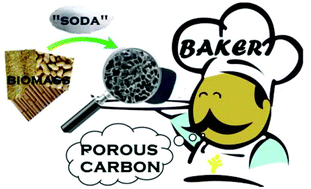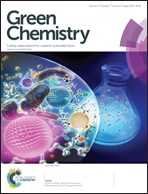Inspired by bread leavening: one-pot synthesis of hierarchically porous carbon for supercapacitors†
Abstract
Hierarchically porous carbons (HPCs) show great potential in energy storage due to their high surface area as well as short ion transport path derived from the interconnected porous framework. However, most existing protocols highly rely on nanocasting and soft-templating, which usually make the use of specific raw materials and thus their industrial application unfeasible. It still remains a big challenge to build HPCs from crude biomass, which is abundant on the earth, through a simple one-pot approach. Inspired by leavening of bread, we design a strategy to fabricate HPCs with three-dimensional (3D) hierarchical pores consisting of macro, meso, and micropores. The “leavening method” is conducted simply by mixing the biomass with KHCO3 followed by elevated temperature treatment. Besides the well-defined hierarchical structure, the as-prepared HPCs also exhibit notably large specific areas (up to 1893 m2 g−1). It is noteworthy that this “leavening” strategy is widely applicable to most of the biomass derivatives and biomass, including glucose, cellulose, chitin, starch, rice straw, bamboo, etc. When evaluated as supercapacitor electrode materials in two-electrode test systems, the as-prepared HPCs exhibit an excellent electrochemical performance: a specific capacitance of 253 F g−1, with almost no capacitance loss after 10 000 cycles.


 Please wait while we load your content...
Please wait while we load your content...